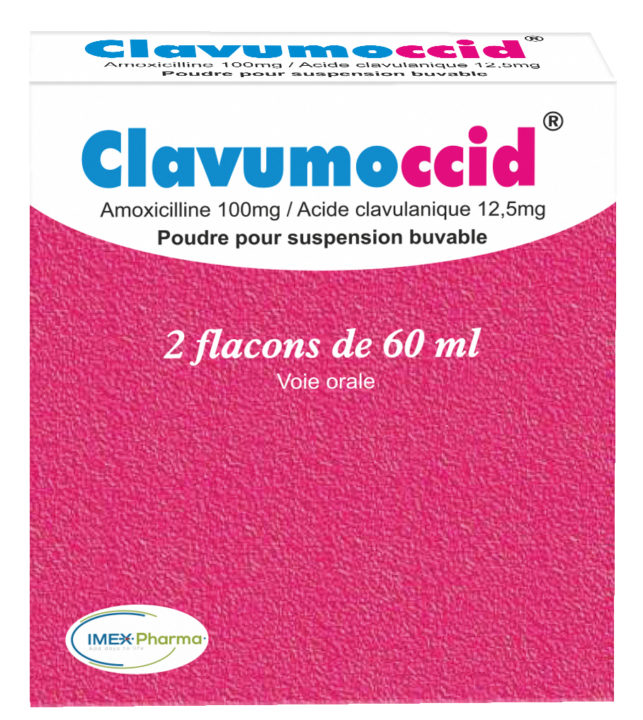>THERAPEUTIC INDICATION
CLAVUMOCCID is an antibiotic that kills bacteria that cause infections. It contains two different molecules, called amoxicillin and clavulanic acid. Amoxicillin belongs to a group of drugs called ‘penicillins’, which can sometimes stop working (become inactivated). The other active ingredient (clavulanic acid) prevents this inactivation.
CLAVUMOCCID is used in infants and children to treat the following infections:
- middle ear and sinus infections,
- respiratory tract infections,
- urinary tract infections,
- skin and soft tissue infections, including dental infections,
- bone and joint infections.
> DOSAGE AND ADMINISTRATION
Always follow the dosage instructions given by your doctor. If in doubt, consult your doctor or pharmacist.
Dosage
Adults and children of 40 kg or more
This suspension is generally not recommended for adults and children weighing 40 kg or more.
Ask your doctor or pharmacist for advice.
Children weighing less than 40 kg
All doses are based on the child’s weight in kilograms.
- Your doctor will tell you how much CLAVUMOCCID to give your baby or child.
- A graduated plastic syringe may be provided. You should use it to give the correct dose to your baby or child.
- Usual dose: 40 mg/5 mg to 80 mg/10 mg per kg of body weight per day, in three doses.
Patients with kidney and liver problems
- If your child has kidney problems, a reduction in dose may be necessary. The doctor may prescribe a different dosage or another medicine.
- If your child has liver problems, more frequent blood tests may be needed to check the functioning of the liver.
How do I administer CLAVUMOCCID?
Always shake the bottle before each use.
- Give your child this medicine at the beginning of a meal or shortly before.
- Take it evenly throughout the day, at least 4 hours apart.
- Do not give 2 doses in 1 hour.
- Do not give CLAVUMOCCID to your child for more than 2 weeks. If your child’s symptoms persist, consult a doctor again.
- Prescription medicine. Ask your doctor for advice.


